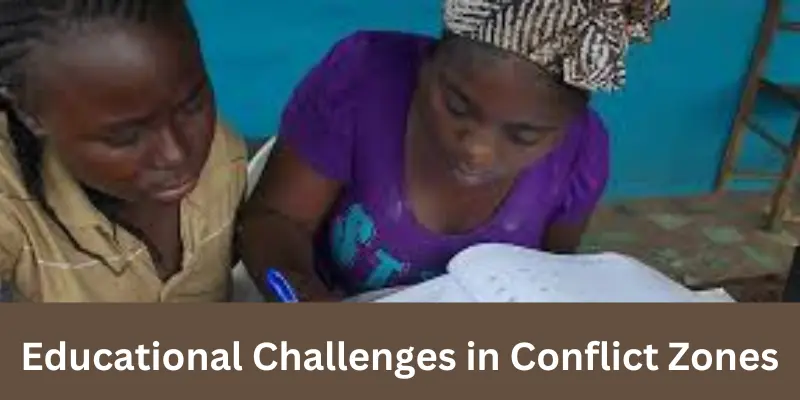Introduction
Education is the cornerstone of progress, shaping the future of individuals and societies alike. In today’s fast-paced world, staying informed about the latest developments in education has never been more critical. From groundbreaking policies to innovative teaching methods, education news provides valuable insights into the trends and challenges shaping the learning landscape.
Whether it’s updates on new government initiatives, advancements in education technology, or inspiring stories of educators and students overcoming odds, education news connects us to the heartbeat of academic evolution. Let’s dive into the latest stories, trends, and issues making waves in the world of learning, empowering you to stay ahead in this ever-changing field.

Would you like me to expand this introduction further or tailor it to a specific tone or audience?
Latest Trends in Global Education Policies
Education policies worldwide are rapidly evolving to meet the demands of a changing world. Governments and institutions are focusing on innovative strategies to bridge gaps, enhance inclusivity, and prepare students for the future. Here’s a look at some of the most notable global trends:
1.Emphasis on Digital Learning
Post-pandemic, many countries are doubling down on digital education. Policies now encourage hybrid learning models, investing in technology, and training teachers to use digital tools effectively. Nations like Estonia have pioneered digital education, setting a global benchmark.
2.Focus on Equity and Inclusion
Ensuring equal access to quality education remains a priority. Policies in countries like Finland and Canada aim to reduce disparities by addressing the needs of marginalized groups, including those from low-income families and indigenous communities.
3.Sustainability Education
Many nations are embedding environmental education into their curricula. Programs aligned with the UN’s Sustainable Development Goals (SDGs) teach students about climate change, conservation, and sustainable practices.
4.Career-Ready Education
Policies are shifting to include vocational training and STEM education, aligning with job market demands. Germany’s dual vocational training system, which combines classroom learning with hands-on industry experience, is being adopted as a model globally.
5.Mental Health and Well-Being Initiatives
With rising awareness of mental health challenges among students, countries are integrating support services into school policies. For example, Australia has implemented nationwide mental health programs for schools, focusing on early intervention.
6.Global Collaboration in Education
Cross-border collaborations are rising, fostering student exchanges, global university partnerships, and shared research initiatives. These policies aim to create a more interconnected and culturally aware global student body.
By staying tuned to these trends, we can better understand how education systems are adapting to prepare future generations for a dynamic world. If you’d like, I can dive deeper into any of these areas or provide examples from specific regions.
Scholarship Opportunities for Aspiring Students
Scholarships are a lifeline for students striving to achieve their educational dreams without the burden of financial stress. With numerous organizations, institutions, and governments offering scholarships, there’s something for everyone—from high school graduates to doctoral candidates. Here’s an overview of the types of opportunities available:
- Merit-Based Scholarships
These scholarships reward students for academic excellence, artistic talent, or exceptional achievements in sports or other extracurricular activities. Programs like the Fulbright Scholarship (for international exchange) and Rhodes Scholarship (for study at the University of Oxford) are among the most prestigious. - Need-Based Scholarships
Designed to help students from low-income families, these scholarships provide financial assistance to ensure equitable access to education. The Federal Pell Grant in the U.S. and similar schemes in other countries aim to bridge financial gaps. - Country-Specific Opportunities
Many countries offer scholarships to attract international students. Examples include:
Chevening Scholarships (UK): Funded by the UK government, these are awarded to outstanding future leaders.
DAAD Scholarships (Germany): For students pursuing postgraduate studies in Germany.
Commonwealth Scholarships: For students from Commonwealth nations to study in member countries.
- Field-Specific Scholarships
Certain scholarships are tailored to specific disciplines. For instance:
STEM scholarships for aspiring scientists and engineers.
Arts scholarships for creative minds.
Medical scholarships to support future healthcare professionals.
- Diversity and Inclusion Scholarships
Scholarships aimed at underrepresented groups help promote inclusion. These include programs for women in STEM, indigenous students, and students with disabilities. - Corporate-Sponsored Scholarships
Many companies, such as Google, Microsoft, and Coca-Cola, offer scholarships to nurture young talent. These often include internships or mentorship opportunities, providing a head start in the industry.
How to Find Scholarships?
Online Platforms: Websites like Scholarship.com, Fastweb, and DAAD provide comprehensive databases of opportunities.
University Websites: Most universities have sections dedicated to scholarships for domestic and international students.
Government Portals: National education departments often list available scholarships.
Tips for Applicants
Start early and research thoroughly.
Tailor your application essays to each scholarship’s mission.
Highlight your unique strengths and experiences.
With dedication and the right resources, scholarships can open doors to a world of opportunities. Need help finding scholarships or crafting applications?
Educational Challenges in Conflict Zones
Imagine trying to study for your exams while hearing loud noises outside or worrying about your safety. This is the reality for many children who live in areas affected by war or conflict. Education in such places becomes very difficult, and here are some of the reasons why:

- Schools Get Destroyed
In war zones, schools often get damaged or even destroyed. Without classrooms, it becomes hard for children to have a safe place to learn. - Teachers Are Missing
Many teachers leave conflict areas to keep themselves safe. Without enough teachers, schools cannot run properly. - Lack of Supplies
Books, pencils, and computers are essential for learning, but in conflict zones, these supplies are hard to get. - Children Can’t Travel Safely
Going to school might mean passing through dangerous areas. Many families decide it’s safer to keep their children at home. - Emotional Stress
Living in a conflict zone can make children very sad or scared, making it hard for them to focus on their studies.
What Can Be Done?
1.Building Temporary Schools: Organizations can set up small, safe schools in areas where children can gather to learn.
2.Providing Online Learning: Where internet access exists, students can study using computers or mobile phones.
3.Counseling Support: Helping children feel better emotionally can make a big difference in their ability to learn.
Why Education Is Important
Even in the toughest times, education gives children hope for a better future. It helps them dream about what they want to be when they grow up, like doctors, teachers, or scientists, and gives them the tools to make those dreams come true. By helping children in conflict zones get an education, we are not just teaching them subjects like math and science but also showing them that the world cares about their future.
Advantages and Disadvantages of News Education
Advantages Of News Education
1.Learning About Changes in Schools
Education news helps students and parents know about new rules, exams, or fun programs like science fairs.
2.Inspiring Stories
It shares amazing stories about kids and teachers who do great things, like winning big competitions or helping their communities.
3.Discovering Opportunities
Sometimes education news talks about scholarships or contests you can join, which might help you reach your dreams.
4.Understanding the World
It teaches you how kids in other countries study, which can be very interesting and make you appreciate your school.
Disadvantages of News Education
1.Too Much Information
Sometimes, there’s so much news that it can be hard to understand or know what’s important.
2.Scary Stories
Not all education news is happy. Stories about problems in schools, like fights or bullying, might feel upsetting.
3.Can Be Confusing
Some news talks about things like government rules or policies that might be tricky to understand without help.
4.Focus on Big Schools
Education news often talks about big schools or cities and might miss stories about smaller towns or schools.
Conclusion
Education news keeps us informed about the latest trends, opportunities, and challenges in schools and learning worldwide. By staying updated, students, parents, and educators can take advantage of new programs, scholarships, and policies that shape the future of education. While education news may sometimes cover difficult topics or complex changes, it also provides inspiration and motivation by sharing success stories and innovative ideas. Whether it’s learning about new teaching methods or discovering ways to improve education for all, reading education news helps us stay connected to the evolving world of learning.
Common FAQs About News Education
1.What is Education News?
Education news is information and updates about the world of education. It includes stories about schools, students, teachers, new policies, and developments in teaching methods. It helps us stay informed about changes and improvements in education systems worldwide.
2.Why is Education News important?
Education news helps students, teachers, and parents stay updated on new programs, opportunities, and policies that affect learning. It also inspires and motivates by sharing stories of success, new ideas, and solutions to challenges in education.
3.Where can I find Education News?
You can find education news on websites like Education Week, Chalkbeat, and local news websites. Social media platforms, education blogs, and online magazines are also great places to read the latest education stories.
4.How can Education News help students?
Education news keeps students informed about changes in their schools, upcoming events, scholarships, and opportunities. It also gives students a chance to learn about the educational experiences of others, both locally and globally.
5.Can Education News help with choosing a career?
Yes! Education news often features stories about new career pathways, opportunities for students in different fields, and tips for choosing the right career. It also highlights programs, like internships and mentorships, that can help students explore careers.
6.Are there any disadvantages to reading Education News?
Sometimes, education news can cover difficult topics, such as problems in schools or challenges faced by students. It may also be hard to understand certain policies or changes, especially if they are complicated or involve government decisions.
7.How often is Education News updated?
Education news is updated regularly, sometimes daily or weekly, depending on the source. Major events like policy changes, new research, or international education conferences may result in special reports or features.
8.Can Education News help improve my studies?
Yes! Education news can introduce you to new study techniques, tools, and resources. It can also provide tips on improving your learning habits or insights into the latest trends in teaching, which can help you be more successful in school.
Let me know if you’d like further details on any of these FAQs ?